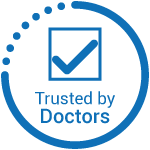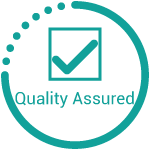Abdominal Aortic Aneurysm – AAA Screening
Ultrasound Scan
Areas/ Organs Covered
![]()
What’s included?
- Detection of Abdominal Aorta Aneurysm using Ultrasound
- Having a Screening Scan cuts the risk of dying from an Abdominal Aortic Aneurysm by about half
- Instant Results Summary with written report sent in 48 hours
- No GP referral Required
- Performed by qualified medical ultrasound specialists
Quicklinks
-
►What is an AAA?
-
►Who is at risk?
-
►How dangerous is it?
-
►How can it be diagnosed?
-
►What is the objective of this scan?
-
►What is included with this scan?
-
►Why choose us?
-
►Who will I see?
-
►What does the AAA scan involved?
-
►How do I prepare?
-
►Ultrasound background
-
►Important Notes
What is an abdominal aortic aneurysm?
The aorta is the main artery which runs from the heart, down through the abdomen and supplies blood to the body.
An abdominal aortic aneurysm (AAA) is a swelling of the abdominal segment of this vessel. An AAA usually causes no symptoms but as the aorta expands its wall becomes weak and may give way. If it bursts this is called a rupture is extremely dangerous and usually fatal. A smaller aneurysm is not dangerous however it can grow and become larger, so it is important to monitor the size.

Approximately 6,000 people in England & Wales die every year from ruptured abdominal aortic aneurysms (source: NHS Abdominal Aneurysm Screening Programme). Around 8 out of 10 people with a ruptured AAA either die before they reach hospital or do not survive surgery.
A simple & quick ultrasound scan can detect an aneurysm with instant results. If an aneurysm is found, you will need to be regularly monitored to check it does not get dangerously larger & can be managed by your clinician reducing negative outcomes.
AAA’s are more common in people aged over 65, in particular men. Therefore, this scan is essential for people who fall into this high-risk category.
Who is at Risk?
- You are over 65
- You are male
- You smoke
- You have high blood pressure
- Your brother, sister or parent has, or has had, an abdominal aortic aneurysm
How dangerous is it?
- Approximately 6,000 people in England & Wales die every year from ruptured abdominal aortic aneurysms (source: NHS Abdominal Aneurysm Screening Programme).
- Around 8 out of 10 people with a ruptured AAA either die before they reach hospital or do not survive surgery.
How can it be diagnosed?
A simple & quick ultrasound scan can detect an aneurysm with instant results. Having this scan cuts the risk of dying from an abdominal aortic aneurysm by about half.
If an aneurysm is found, you will need to be regularly monitored to check it does not get dangerously larger & can be managed by your clinician reducing negative outcomes.
AAA’s are more common in people aged over 65, in particular men. Therefore, this scan is essential for people who fall into this high-risk category.
Many of our clients choose to book an ultrasound scan with us after having been referred for a AAA scan in the NHS by their GP however are unwilling to wait for a scan appointment within the NHS, which can be many weeks. Going privately bypasses this allowing quicker & more convenient appointments & faster results.
We offer flexible & convenient appointments suited around you and your life with clinics running during the day, evening and weekends.
What is the objective of this scan?
- To visualise the abdominal aorta using ultrasound and detect if an aortic aneurysm is present.
In general, if you have an AAA, you will not know and probably will not feel any symptoms. If, however the aneurysm bursts it is regarded as a medical emergency and more people either die before they reach hospital or do not survive.
This screening scan is a way of detecting if an aneurysm is present in the abdominal aorta and assessing if it needs to be monitored or requires specialist or urgent attention, allowing treatment before it bursts.
What is included with this scan?
A written ultrasound report of the examination including any measurements usually following the scan or within 24 hours after your appointment.
Why choose us?
We pride ourselves on providing the best quality service we can which is why we are trusted by GP’s, doctors, physiotherapists, midwifes and many other healthcare professionals.
Our mission of better quality healthcare for everyone really sets us apart from the vast majority of other clinics and is the main reason why we are among the few diagnostic clinics to not only be approved by but also provide services to the NHS and thus the general public. This also means that unlike many other clinics we have additional strict quality control measures which we must adhere to meaning you are in safe hands with us and our team.

Who will I see?
You will be seen by a healthcare professional who specialises in clinical medical ultrasound. Unlike other diagnostic tests which produce results for analysis, ultrasound imaging is “real- time” therefore the quality of the scan being performed is the basis of the information you take away and heavily depends upon the expertise, experience and skill of the healthcare professional scanning you. This is an important point which is often overlooked by many people when deciding where to go, therefore you can be reassured that at Ultrasound Scan Clinic at St Mary’s Medical Centre you will always be seen by an expert who has vast expertise and experience in the field of medical ultrasound.

What does the aorta aneurysm ultrasound screening scan involve?
During the scan you will be asked to uncover your abdominal area and a small amount of jelly will be placed over your tummy. An ultrasound camera will then be placed on top and moved along your abdomen. This will result in a picture appearing on the ultrasound monitor which will be translated by a medical ultrasound practitioner. The examination itself usually lasts a few minutes and is pain free. At the end of the examination the results will be given to you, along with any recommendations which you can take to your regular healthcare professional.
How do I prepare for this scan?
- No specific preparation is required for this scan.
Ultrasound: Background
An ultrasound scan is a painless test that provides images of the inside of the body by using high frequency sound waves. These sound waves are at a frequency which cannot be heard by the human ear but when they bounce off different parts of the body, create echoes that are picked up by the probe and turned into a moving image.
Unlike other scans such as MRI and CT, ultrasound does not involve radiation and is in real time i.e. live imaging and is not static i.e. still pictures. This live information is interpreted and is used as the basis of the subsequent diagnostic report.
There are many kinds of ultrasound scans that can be performed as ultrasound has numerous applications in healthcare and are ultimately beneficial to us if used in the right context by a competent body or person. However as with any test, ultrasound scans have limitations some of which are generic to all scans such as not being able to visualise bone clearly or scan specific and therefore may not be suitable in certain situations and like any test cannot diagnose every problem.
For further information about ultrasound please click here.
Please note
- We will require details of your GP / Health Care Professional, which may be requested before or at the time of the scan.
- This scan requires access to the area of interest; therefore, it is recommended to wear loose clothing to facilitate this process.
- Study images may be available at an additional charge – more information and to request this can be found by clicking here.
- All our first line ultrasound scans are optional. You must be at least 16 years old and you should have no existing medical condition or treatment pending that relates to the scan you are booking. If you are in any doubt about having any type of scan, you should consult your GP.
Regular Price
£59
£30 Booking Deposit Required.
Terms and Conditions apply.
.
Call Me Now